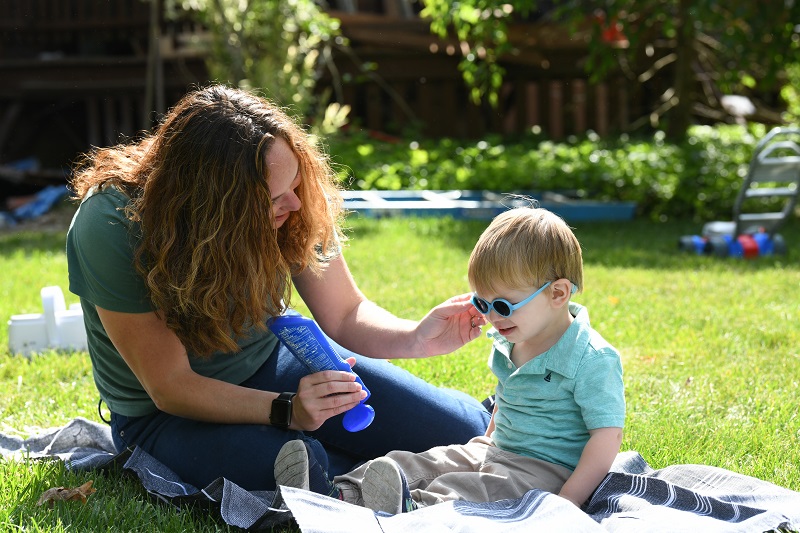Choosing the Right Sunscreen

May 29, 2019
Sunny days mean lots of time outdoors at the playground, pool and beach. And all that exposure to sunshine means that skin protection is vital.
With so many different sunscreen products on the shelf, choosing the right UV blocker can be confusing. Whether it’s summer vacation or a tropical winter vacation, here is a crash course in making the best sunscreen choice for you and your kids.
Chemical or Mineral-Based Sunscreen?
The two main types of sunscreens you see lining the shelves use either chemicals or minerals to shield your skin. Chemical-based sunscreens use ingredients like oxybenzone or octinoxate, and these sunscreen choices protect from the sun by absorbing directly into the skin and then breaking down harmful UV rays.
- Typically easier to apply than their mineral-based counterparts, chemical-based sunscreens leave no visible residue.
- For full protection, they need to be applied about 10–30 minutes before sun exposure, and frequent reapplication may be necessary, especially after being in the water.
- Anyone with sensitive skin should test these before all-over application.
“Rarely, some of the chemicals may cause skin reaction or allergies, so a skin test on the inside of your wrist is recommended before using all over the body,” says Helen T. Shin, M.D., who specializes in adolescent and pediatric dermatology.
Although some studies have linked chemicals like oxybenzone to endocrine system disruption, these sunscreens are, overall, considered safe for use.
Sunscreens with Natural Ingredients
If you are interested in a sunscreen with more natural ingredients, plenty of mineral sunscreen options have popped up in recent years. These sunscreens use zinc oxide or titanium dioxide, which act as physical barriers against the sun’s rays. Because they are meant to lay on top of your skin, some of these products can leave a noticeable residue.
- Due to the lack of absorption, mineral sunscreens can rub off, sweat off and rinse off more easily, resulting in the need to reapply.
- If you or your kids have ever had a skin reaction to chemical sunscreens, these natural sunscreens are worth a look.
“Because mineral sunscreens are less likely to cause skin reactions or irritation, they can be good options for sensitive skin,” says Anita Jasani, M.D., a family medicine physician.
Sunscreen for Kids and Babies
To determine what type of sunscreen you’re considering, look at the active ingredients on the label. And pay attention to the SPF. The American Academy of Pediatrics recommends that children wear sunscreen with an SPF of 15 or greater on any exposed areas of skin.
One final word of warning: Remember that sunscreen should not be applied to a young baby.
“Sunscreen use is not recommended for children younger than 6 months. Instead, try to keep them out of the sun or cover as much of their delicate skin as possible,” says pediatrician Alexis Oram, M.D., MBA, FAAP.
No matter what you choose, remember that any sunscreen is better than unprotected sun exposure.
Next Steps & Resources:
- Meet our sources: Helen T. Shin, M.D., Anita Jasani, M.D., Alexis Oram, M.D., MBA, FAAP
- To make an appointment with a doctor near you, call 800-822-8905 or visit our website.
The material provided through HealthU is intended to be used as general information only and should not replace the advice of your physician. Always consult your physician for individual care.






